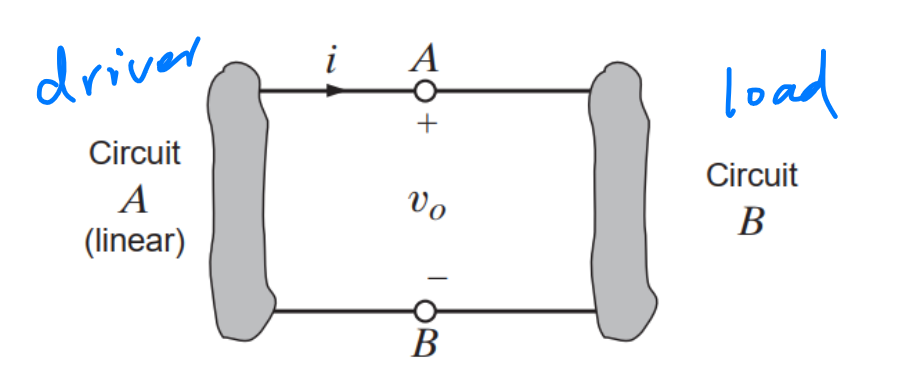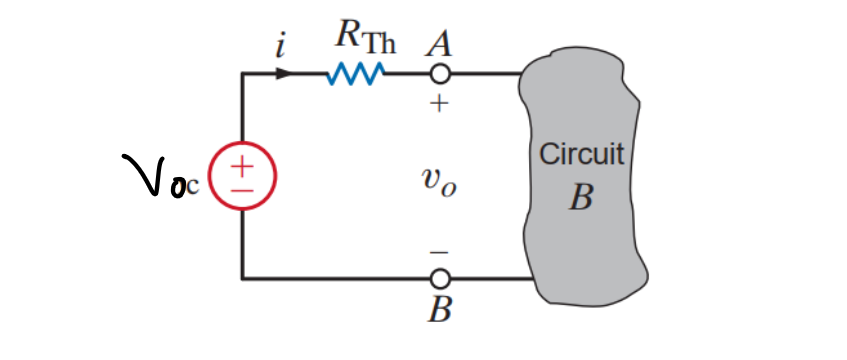Thevenin’s theorem tells us that any linear circuit at terminals is equivalent to a circuit with a voltage source in series with a resistor . An analogous theorem is Norton’s theorem, with a current source instead.

 A handy set of equations are:
A handy set of equations are:
Observe that the i-v characteristic for both Thevenin and Norton circuits follows:
So is as given, and .
Process
For circuits with only independent sources:
- Remove load, then find using simplifications and source transformation.
- Then, to find , we set all independent sources to zero and find the equivalent resistance.
For circuits with only dependent sources:
- Assume some 1 V or 1 A source at the terminal and determine the dependent output. The choice of current or voltage source doesn’t matter.
- Then find using Ohm’s law.
For a mix of independent and dependent sources:
- First determine across the terminals.
- Then short-circuit the terminals and calculate . Remember to skip resistors where necessary (i.e., current takes path of least resistance, so short > resistor if in parallel).
- Calculate with the voltage and current formula above.
AC analysis
For phasor analysis, Thevenin’s and Norton’s theorems still holds. Instead of a resistor, we have some impedance. Similar to the time domain, we have and . Same relations as before.
See also
- Maximum power transfer, an application of the theorem